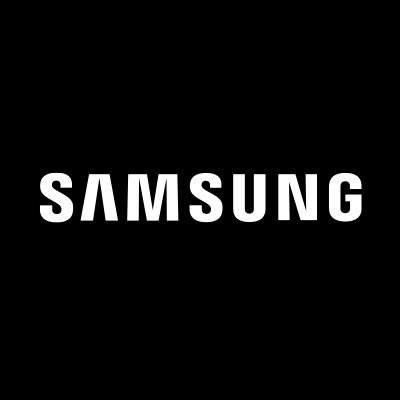The Battle of Giants: Google and Apple in the Mobile Arena
May 16, 2025, 12:11 am

Location: Belgium, Brussels-Capital, Brussels
Employees: 10001+
Founded date: 2004
Total raised: $440K

Location: United States, California, San Francisco
Employees: 10001+
Founded date: 1938
Total raised: $6.4B
In the fast-paced world of technology, giants clash. Google and Apple are at the forefront, each wielding their own unique weapons. Google recently unveiled a major redesign of its Android operating system, while Apple faces scrutiny over security vulnerabilities. Both companies are vying for dominance in a market that is as competitive as a high-stakes poker game.
Google's latest update, dubbed Material 3 Expressive, is a bold move. It’s not just a facelift; it’s a complete overhaul. The new design language aims to make Android feel more natural and fluid. Think of it as a fresh coat of paint on a classic car. It’s sleek, modern, and inviting. The update includes vibrant animations, larger typography, and a focus on personalization. Google conducted extensive research, involving over 18,000 participants, to ensure the changes resonate with users. The goal? To create an experience that feels intuitive, especially for older users.
This redesign comes just as Apple prepares to unveil its own software changes. Apple’s Worldwide Developers Conference is set for June 9, and the anticipation is palpable. Apple aims to simplify its operating systems, making them more consistent and user-friendly. It’s a strategic move to keep pace with Google’s innovations.
However, while Google is busy revamping its interface, Apple is grappling with a different challenge. The Indian Computer Emergency Response Team (CERT-In) recently issued a high-severity warning about security flaws in Apple’s software. This is a significant crack in Apple’s fortress of privacy and security. Users of older iOS versions are urged to update immediately. The vulnerabilities could allow malicious apps to take control of devices, access sensitive data, or even render them unusable. This is a nightmare scenario for a company that prides itself on being a privacy-first brand.
Despite these security concerns, Apple is thriving in India. The company reported a staggering 23% year-on-year growth in the first quarter of FY25. Apple shipped a record 3.2 million smartphones, marking its entry into the top five smartphone brands in India. This success is fueled by aggressive pricing strategies and appealing financing options. The iPhone 16, in particular, has become a hot commodity, capturing a significant share of the market.
But can Apple maintain this momentum while addressing security issues? The stakes are high. The vulnerabilities affect a broad user base, unlike targeted attacks that focus on specific individuals. This could lead to significant risks for both consumers and enterprises. As more professionals use iPhones for work, the potential for data breaches increases.
Experts suggest that Apple must enhance its security measures. Timely software updates, robust Mobile Device Management (MDM), and multi-factor authentication (MFA) are essential. While Apple’s quick response to patch vulnerabilities is commendable, it’s not enough. Continuous efforts in secure development and system architecture are crucial.
The question looms: will these security flaws dent Apple’s rising success in India? The brand’s allure remains strong, especially in Tier-2 cities where owning an iPhone is a status symbol. However, as competitors like Vivo and Samsung continue to gain ground, Apple must tread carefully.
On the other hand, Google’s Android is the world’s most widely used mobile operating system. It powers devices from various manufacturers, including Samsung and Xiaomi. Google’s redesign aims to create a more cohesive experience across all devices. However, the rollout may take time, as manufacturers control their own update schedules.
Beyond smartphones, Google is expanding its design changes to Wear OS and its Gemini AI system. This broadens the reach of its innovations, making them accessible across various platforms. The update promises improved functionality for smartwatch users, including enhanced battery life and smarter reminders.
As both companies push forward, the competition intensifies. Google’s focus on personalization and fluidity contrasts with Apple’s emphasis on security and privacy. Each company has its strengths and weaknesses. Google is making strides in design and user experience, while Apple must navigate the turbulent waters of security concerns.
In this battle of giants, the stakes are high. Both companies are fighting for the hearts and minds of consumers. Google aims to create a more engaging and personalized experience, while Apple strives to maintain its reputation for security and privacy.
As we look ahead, the future remains uncertain. Will Apple’s security flaws tarnish its image? Can Google’s redesign win over users? The answers lie in the hands of consumers. They will decide which giant emerges victorious in this ongoing saga.
In the end, the tech landscape is a dynamic battlefield. Innovations will continue to shape the way we interact with our devices. As Google and Apple clash, one thing is clear: the competition will only grow fiercer. The battle for mobile supremacy is far from over.
Google's latest update, dubbed Material 3 Expressive, is a bold move. It’s not just a facelift; it’s a complete overhaul. The new design language aims to make Android feel more natural and fluid. Think of it as a fresh coat of paint on a classic car. It’s sleek, modern, and inviting. The update includes vibrant animations, larger typography, and a focus on personalization. Google conducted extensive research, involving over 18,000 participants, to ensure the changes resonate with users. The goal? To create an experience that feels intuitive, especially for older users.
This redesign comes just as Apple prepares to unveil its own software changes. Apple’s Worldwide Developers Conference is set for June 9, and the anticipation is palpable. Apple aims to simplify its operating systems, making them more consistent and user-friendly. It’s a strategic move to keep pace with Google’s innovations.
However, while Google is busy revamping its interface, Apple is grappling with a different challenge. The Indian Computer Emergency Response Team (CERT-In) recently issued a high-severity warning about security flaws in Apple’s software. This is a significant crack in Apple’s fortress of privacy and security. Users of older iOS versions are urged to update immediately. The vulnerabilities could allow malicious apps to take control of devices, access sensitive data, or even render them unusable. This is a nightmare scenario for a company that prides itself on being a privacy-first brand.
Despite these security concerns, Apple is thriving in India. The company reported a staggering 23% year-on-year growth in the first quarter of FY25. Apple shipped a record 3.2 million smartphones, marking its entry into the top five smartphone brands in India. This success is fueled by aggressive pricing strategies and appealing financing options. The iPhone 16, in particular, has become a hot commodity, capturing a significant share of the market.
But can Apple maintain this momentum while addressing security issues? The stakes are high. The vulnerabilities affect a broad user base, unlike targeted attacks that focus on specific individuals. This could lead to significant risks for both consumers and enterprises. As more professionals use iPhones for work, the potential for data breaches increases.
Experts suggest that Apple must enhance its security measures. Timely software updates, robust Mobile Device Management (MDM), and multi-factor authentication (MFA) are essential. While Apple’s quick response to patch vulnerabilities is commendable, it’s not enough. Continuous efforts in secure development and system architecture are crucial.
The question looms: will these security flaws dent Apple’s rising success in India? The brand’s allure remains strong, especially in Tier-2 cities where owning an iPhone is a status symbol. However, as competitors like Vivo and Samsung continue to gain ground, Apple must tread carefully.
On the other hand, Google’s Android is the world’s most widely used mobile operating system. It powers devices from various manufacturers, including Samsung and Xiaomi. Google’s redesign aims to create a more cohesive experience across all devices. However, the rollout may take time, as manufacturers control their own update schedules.
Beyond smartphones, Google is expanding its design changes to Wear OS and its Gemini AI system. This broadens the reach of its innovations, making them accessible across various platforms. The update promises improved functionality for smartwatch users, including enhanced battery life and smarter reminders.
As both companies push forward, the competition intensifies. Google’s focus on personalization and fluidity contrasts with Apple’s emphasis on security and privacy. Each company has its strengths and weaknesses. Google is making strides in design and user experience, while Apple must navigate the turbulent waters of security concerns.
In this battle of giants, the stakes are high. Both companies are fighting for the hearts and minds of consumers. Google aims to create a more engaging and personalized experience, while Apple strives to maintain its reputation for security and privacy.
As we look ahead, the future remains uncertain. Will Apple’s security flaws tarnish its image? Can Google’s redesign win over users? The answers lie in the hands of consumers. They will decide which giant emerges victorious in this ongoing saga.
In the end, the tech landscape is a dynamic battlefield. Innovations will continue to shape the way we interact with our devices. As Google and Apple clash, one thing is clear: the competition will only grow fiercer. The battle for mobile supremacy is far from over.

